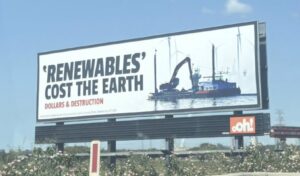The Australian Labor Party (ALP) is expected to announce the second instalment of its energy and climate policy framework, proposing a more robust ‘baseline and credit’ scheme under the government’s safeguard mechanism framework, aligned with an economy-wide emissions target of 45 per cent below 2005 levels by 2030.
Excluding the electricity sector, the safeguard mechanism covers around 200 high emitting energy, metals & mining, manufacturing, and transport facilities. Together these facilities are responsible for approximately one-quarter (25 per cent) of Australia’s emissions, or 130 million tonnes (Mt) of CO2e per annum.
Below, we provide initial observations on the Safeguard 2.0 market, derived from our recent update, “Safeguard Mechanism 2.0, A carbon price under the ALP’s tighter baseline scheme”, including an initial analysis of supply-demand balance through to 2030 and price interaction between domestic and international offsets.
Industry likely to face a short market from day one
While emissions from the electricity sector have decreased in recent years, industrial emissions covered by the safeguard mechanism have grown 17 per cent since 2013-14 – and could overtake electricity generation as Australia’s largest covered segment during the next decade.
Assuming a uniform reduction in baselines is applied to safeguard facilities, consistent with a 45 per cent emissions target, we model the Safeguard 2.0 market to be short from the outset, with demand rapidly increasing over the next decade.
We estimate a cumulative short of around 350 Mt between 2020-30, with the dynamic of emissions growth versus declining emissions baselines creating a tight market setting, particularly for the fugitive emissions sectors, such as LNG production and coal mining, and domestic aviation and freight, where emissions have increased.
This shortfall is assumed to be filled by the lowest cost combination of: 1) domestic Australian offsets; 2) international offsets; and 3) direct abatement, with the volume and type of offset demand having a large bearing on the Australian carbon price.
Domestic offset supply is constrained by the ERF
Over the past 12 months, scarcity of ACCU supply has led to upward pressure on the ACCU ‘spot’ price, due to the majority of domestic offsets being locked away from the spot market under contract with the Regulator (via the ERF). In addition, ERF contracts allow payment for early delivery of ACCUs, incentivising proponents to cash-in excess units with the Regulator at their contract price, rather than provide liquidity to the safeguard market.
As shown, this threatens to limit future ACCU availability (RHS axis) to fulfil spot demand for offsets.

While the continued development of domestic offset supply is constrained by the ERF, new demand under Safeguard 2.0 is likely to incentivise increased ACCU supply from domestic offset developers, particularly given the nominally short market. In addition, we continue to anticipate growth in ACCU supply as a result of changes to ACCU issuance methods, and continued issuance to existing projects.
International offsets are no longer “cheap”
While international offsets were previously considered ‘least cost’ for Australian companies – trading between $1 and $10 under the former CPM – the global market landscape has changed markedly since 2015, with the use of Certified Emissions Reductions (CERs) no longer allowed in most carbon markets, and the Paris Agreement proposing to replace the Clean Development Mechanism (CDM) by 2020.
In addition, EUA prices have grown from €5-10 (A$7-$15) between 2013-18 to €15-20 (A$24-32) in FY19 – in line with 10-year highs. As oversupply in the EU ETS is rebalanced with underlying demand (under the Market Stability Reserve), we expect EUA prices to quickly grow towards A$60 by 2023.

Local offsets the marginal source of emissions reductions
As prices rise, we expect international offsets to be priced out of the Australian market in favour of cheaper domestic carbon farming projects, with local offsets modelled to be the marginal source of emissions reductions for Australian companies – therefore driving the Australian carbon price.
As a result, modelling indicates that strong demand for domestic carbon offsets would see the “safeguard 2.0” market priced much lower than international markets.
Unlike the former Carbon Price Mechanism, we see ample local abatement available well under European prices. We therefore expect the future Australian carbon price to reflect the underlying cost of local abatement, currently around $15-17 – 60 per cent cheaper than international offset prices.
With Australian Carbon Credit Units (ACCUs) the marginal source of emissions reductions under Safeguard 2.0, we model the local carbon price to converge with ACCU prices, reflecting the balance between underlying supply and demand. Longer-term, the Australian carbon price is modelled to move broadly in line with the cost and volume of GHG emissions abatement required across the broader economy – set by the national emissions reduction target – with ample domestic abatement available to meet future emissions targets under the Paris Agreement.
A range of carbon farming activities are therefore likely to play a role – such as reforestation, agriculture and savannah burning – with new investment likely to ensure there is enough supply to overcome current offset scarcity.
This article is derived from RepuTex Energy’s recent report, “Safeguard Mechanism 2.0, A carbon price under the ALP’s tighter baseline scheme”. To access this report, click here.







